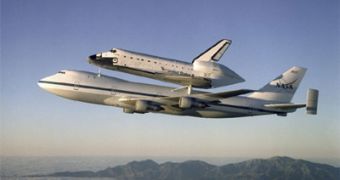Space shuttle Atlantis started the voyage home, at the Kennedy Space Center, in Florida, from the secondary landing site at Edwards Air Force Base, California, atop a modified 747 carrier aircraft. The shuttle was mounted on its back and left from the Mojave Desert air base at 6:05 a.m. PDT, according to Alan Brown, a spokesman at NASA's Dryden Flight Research Center at Edwards Air Force Base.
The space shuttle Atlantis landed safely back on Earth, at Edwards Air Force Base in California, after a two week mission during which it delivered new solar power wings and a fresh crew member to the International Space Station.
NASA officials were forced to choose the secondary landing site, instead of the shuttle's home base, in Florida, when flight rules prevented it from landing, because of thunderstorms within 34 miles and clouds within 8,000 feet of the landing strip at Kennedy Space Center.
The agency pays much attention to weather conditions, even if some people might call the agency "overprotecting" but they want to take no chances when clouds are present below 2,400 meters (7,800 feet), which could affect the pilot's vision as the shuttle heads to the landing strip.
The modified carrier made a planned pit-stop at Offutt Air Force Base near Omaha, Nebraska, to refuel and to check again the connection with the space shuttle and was forced to wait until this morning to take off for Florida, because of bad weather at the destination.
Another refueling stop was made in Amarillo, Texas, on a commercial airway, which is quite unusual, considering the security measures around the space program.
Returning the shuttle from California on a piggy-back ride atop a Boeing 747 costs around $2 million and could even affect the schedule of future missions in the upcoming space exploration program.

 14 DAY TRIAL //
14 DAY TRIAL //